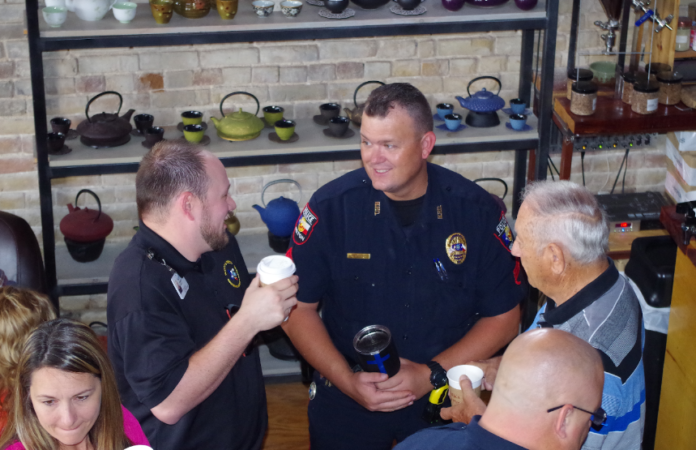In the shifting landscape of law enforcement, the concept of community policing has emerged as a promising solution to rebuild trust, enhance public safety, and improve neighborhoods. Community policing is not just about enforcing laws and maintaining order. It’s a practice that, when executed thoughtfully and effectively, can transform neighborhoods for the better.
Understanding Community Policing
At its core, community policing is about partnership and problem-solving. Law enforcement officers, local businesses, schools, faith communities, and individual residents collaborate to identify and address public safety concerns. This strategy goes beyond traditional law enforcement, focusing more on proactive initiatives and less on reactive measures. The police become less of an outside entity and more of an integral part of the community, leading to safer, healthier neighborhoods.
In Minnesota, for instance, law enforcement agencies have worked with communities to curb illegal arms trading, leading to safer streets. While citizens are legally allowed to sell firearms, a lack of information can often lead to unlawful transactions. To address this, online platforms like Cash For Arms provide clear guidelines on ‘Selling a Gun in Minnesota’, helping citizens navigate the often complex legal landscape.
The Benefits of Community Policing
Community policing has tangible benefits. Firstly, it fosters a sense of mutual respect between law enforcement and the community. By engaging in regular dialogue, police and residents gain a better understanding of each other’s perspectives, leading to improved cooperation.
Secondly, community policing facilitates problem-solving. Because police officers are more familiar with the local context, they can tailor solutions that best fit the community’s needs. This method leads to more effective interventions compared to traditional policing.
Lastly, community policing helps in crime reduction. In a study by the National Institute of Justice, community-oriented policing strategies significantly reduced crime rates in various neighborhoods across the United States.
The Role of Collaborative Efforts
Collaborative efforts play a crucial role in community policing. They encompass a broad range of initiatives, from neighborhood watch programs and community meetings to partnerships with local businesses and social service providers. When everyone contributes to public safety, it enhances trust, promotes transparency, and encourages collective responsibility.
In a notable example, the Seattle Police Department’s Micro Community Policing Plans utilized a grassroots approach to develop neighborhood-specific strategies, leading to improved public safety and community satisfaction.
Challenges and Solutions
Despite its many benefits, community policing is not without challenges. Lack of resources, cultural barriers, and entrenched practices can sometimes hamper implementation. However, these obstacles can be overcome through consistent commitment, cultural competency training, and open communication.
Moreover, community policing requires measurable outcomes to demonstrate its effectiveness. Agencies like the Community Oriented Policing Services (COPS) in the U.S. provide resources to measure and improve the effectiveness of community policing efforts.
Conclusion
Community policing is a profound shift from traditional law enforcement strategies, placing equal emphasis on prevention as on crime-solving. As we’ve seen, the effects of this approach go beyond reducing crime rates – it creates safer, more resilient neighborhoods where everyone has a stake in public safety.
As we move forward, it’s essential to continue fostering these collaborative efforts, bringing together law enforcement, community members, and other stakeholders in a shared vision for safer, stronger neighborhoods. The positive transformation that community policing can bring is not just an ideal to strive towards; it’s a practical, achievable goal for communities across the country.
With the right commitment, resources, and collaborative spirit, community policing can indeed create neighborhoods that are not just places to live, but places to thrive.
Read also more information

